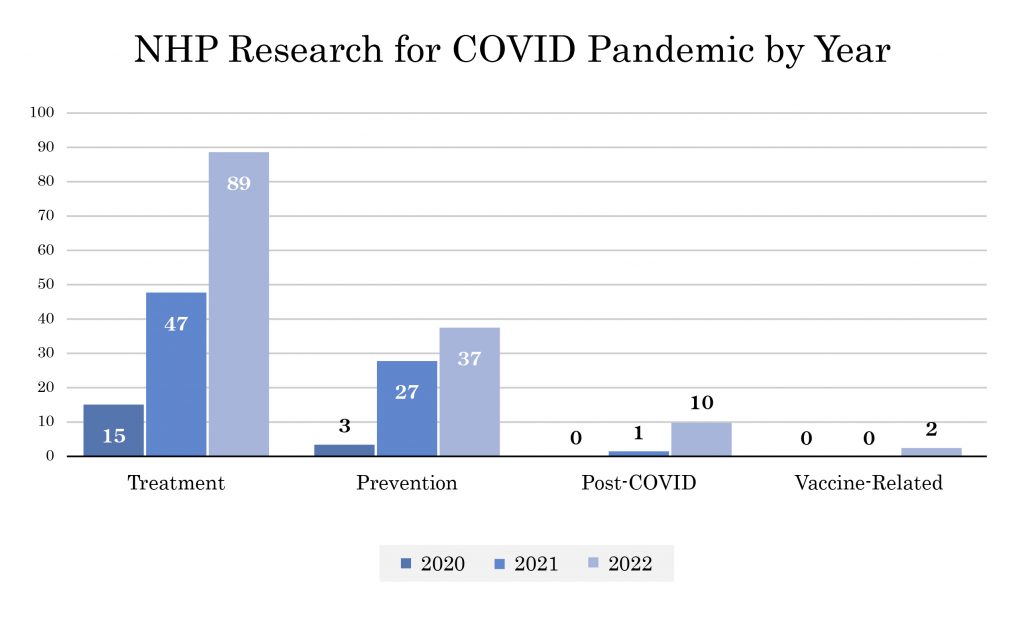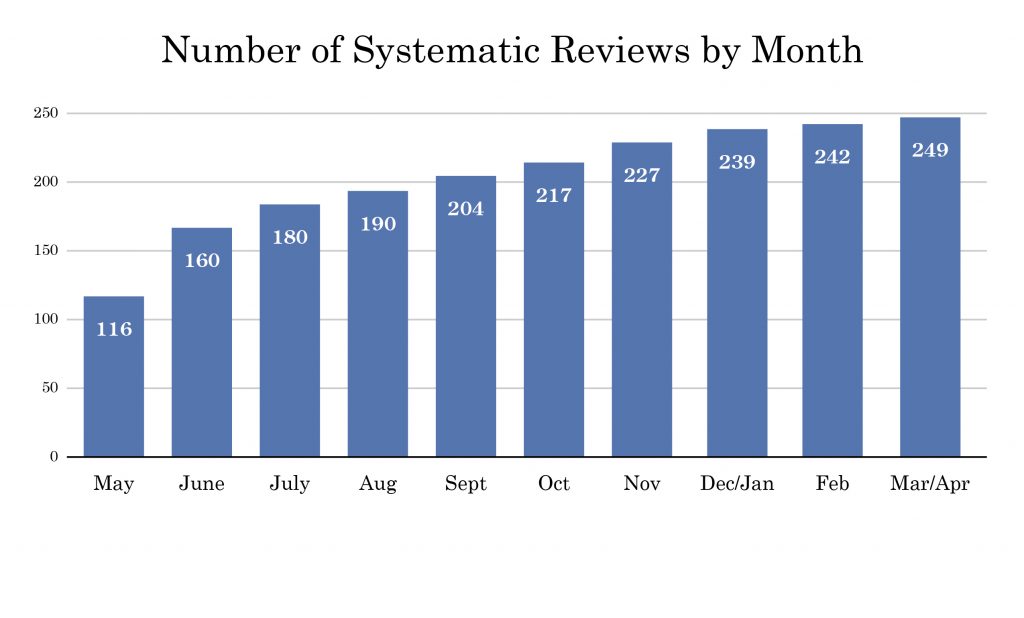The goal of this living map of evidence is to act as a resource, attesting to the abundance and nature of the published peer-reviewed evidence being synthesized on natural health products (NHPs) for application to COVID in the form of research reports that have used a systematic (and reproducible) strategy. This live review will be divided by the prevention of COVID, the treatment of COVID and post-COVID syndrome. It will be updated at the end of each month.


Statistical Overview – as of April 2023
Numbers of research reports investigating the use of NHPs for the application to COVID: 249
Number of studies included in those reports: 5,811*
Number of participants included: 18,302,616*
Total number of references: 10,280
*Note: numbers were not included in all papers.
Methodology
Medline PubMed was searched from 2020 onwards using various terms for SARS-CoV-2 and symptoms, combined with terms for natural health products, herbs, minerals, and dietary supplements. Systematic reviews published in English were included. Type of study, number of participants and conclusions were verified in duplicate from the full-text of the article. This is intended as a living review; the search will be updated monthly and the data displayed on the WNF website will be refreshed accordingly.
Important context and clarifications:
- Each of the included reviews included in the WNF’s living evidence map employed a systematic search strategy, and might be different forms of reviews
(ie integrative, rapid, scoping etc.) - Some of the reviews contained in this living portrayal of evidence include various forms of evidence (eg. clinical trials, observational studies, preclinical studies or other systematic reviews).
- Each included review is on the topic of COVID, symptoms often experienced in relation to COVID, published during the pandemic period, however not all studies limit their findings to only COVID. For example, some summarize evidence from upper respiratory tract infections.
- Due to the nature of reviews, a number of original studies may be covered by more than one review. The tally of the number of studies included in reports deliberately includes duplication when one study may have been cited by more than one review.
- An assessment of the risk of bias of individual studies has not been assessed.
- Evidence in this field is changing rapidly – if you have comments, want to use the data in some way, or notice a systematic review that has not yet been reflected in our evidence map, please contact us at Live_Review@worldnaturopathicfederation.org.

